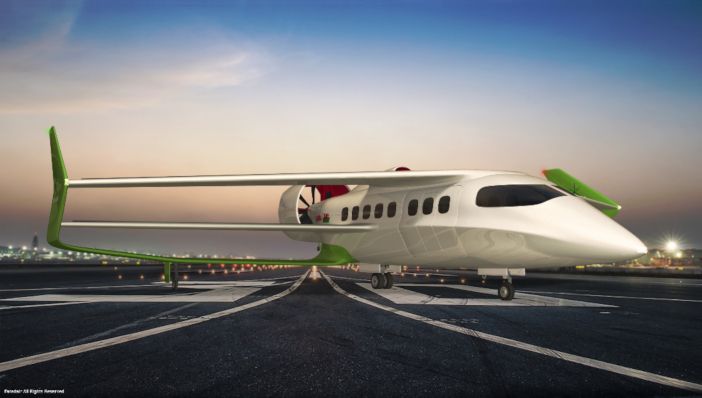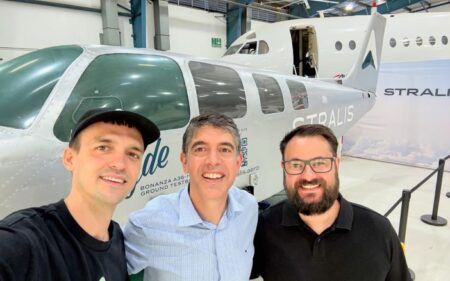UK-based startup Faradair plans to certify an 18-seat, hybrid electric aircraft by 2025 for passenger operations.
The BEHA (Bio Electric Hybrid Aircraft) uses a patented “triple box-wing” high-lift configuration, to enable a Short Take-Off and Landing (STOL) capability of less than 300m (985ft) of runway. The concept also uses twin contra-rotating propfans within a vectored thrust, acoustic reduction duct that Faradair claims improves efficiency, enabling a cruise speed of 230mph (370km/h) and reduces noise to 60dBa at take-off.
The aircraft has been in development for four years and both simulated and scale model testing has been conducted. Faradair plans to start building its first BEHA prototypes later this year and to start flight trials by 2022.
The aircraft can be configured to carry three LD3 cargo containers and has an internal payload capability of five tonnes. According to Faradair, BEHA will be able to change from a passenger to cargo-carrying configuration in 15 minutes and it is already in discussion with customers.
The aircraft has a range of 1000 nautical miles depending on the configuration.
The Faradair BEHA is certifiable to existing Part23 standards and with its STOL-capability will be able to integrate within existing air networks. Its hybrid propulsion system will combine electric motors with a turboprop engine and it will use existing battery technology for emergency power and ground operations.
Neil Cloughley, managing director of Faradair, launched the company in 2014. He said, “So many of the constraints surrounding E-VTOL do not apply to our vehicle and that is why as a result, we will be able to deliver mass transit regional air mobility at a price that everyone can afford.
“We have always believed in the opportunity of hybrid propulsion to help reduce noise and operating costs in a specifically designed airframe optimized for regional flight capability.
“Our order book is now open and we look forward to working with potential customers and airport operators”





